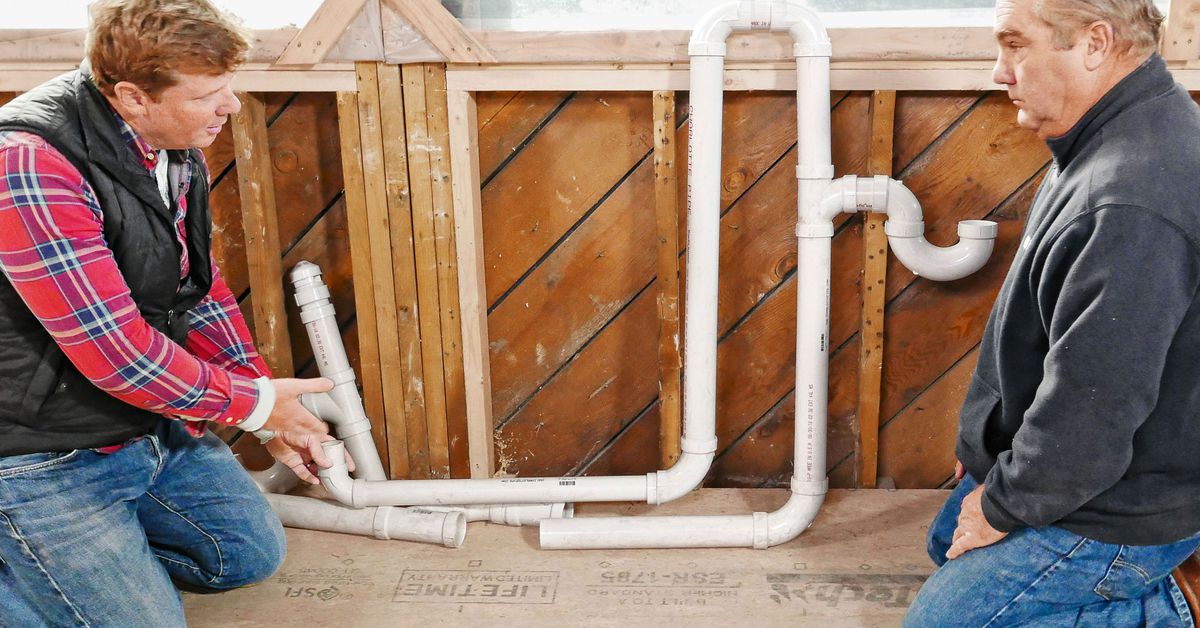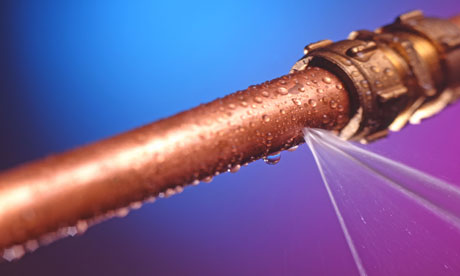Don't Take Chances: Common Appliance Problems That Require a Plumbing Professional
Don't Take Chances: Common Appliance Problems That Require a Plumbing Professional
Blog Article
Almost everyone will have their own individual assumption in relation to Why Do My Plumbing Pipes Make A Knocking Noise.

To diagnose noisy plumbing, it is essential to figure out very first whether the undesirable audios occur on the system's inlet side-in other words, when water is transformed on-or on the drainpipe side. Sounds on the inlet side have varied causes: extreme water stress, used valve and faucet components, poorly linked pumps or various other home appliances, inaccurately put pipeline bolts, and plumbing runs including too many tight bends or various other limitations. Sounds on the drainpipe side generally originate from inadequate area or, similar to some inlet side sound, a format having limited bends.
Hissing
Hissing sound that occurs when a faucet is opened slightly typically signals extreme water pressure. Consult your regional water company if you think this issue; it will be able to tell you the water pressure in your location and also can mount a pressurereducing valve on the incoming supply of water pipeline if needed.
Thudding
Thudding sound, often accompanied by shivering pipes, when a faucet or home appliance valve is shut off is a problem called water hammer. The noise as well as resonance are brought on by the resounding wave of stress in the water, which instantly has no area to go. Occasionally opening up a shutoff that releases water promptly right into an area of piping containing a restriction, joint, or tee installation can generate the very same problem.
Water hammer can normally be treated by mounting installations called air chambers or shock absorbers in the plumbing to which the trouble shutoffs or taps are linked. These gadgets enable the shock wave produced by the halted flow of water to dissipate in the air they contain, which (unlike water) is compressible.
Older plumbing systems might have brief vertical sections of capped pipeline behind wall surfaces on faucet runs for the same objective; these can ultimately full of water, reducing or damaging their performance. The cure is to drain pipes the water system completely by shutting down the main water valve and opening up all faucets. After that open the primary supply shutoff and also shut the faucets one at a time, starting with the tap nearest the shutoff as well as ending with the one farthest away.
Chattering or Shrilling
Extreme chattering or shrieking that occurs when a valve or tap is switched on, and that usually goes away when the installation is opened completely, signals loose or malfunctioning interior parts. The solution is to change the shutoff or faucet with a brand-new one.
Pumps and also home appliances such as washing equipments as well as dishwashers can move motor noise to pipelines if they are incorrectly connected. Connect such products to plumbing with plastic or rubber hoses-never rigid pipe-to isolate them.
Various Other Inlet Side Noises
Creaking, squeaking, damaging, snapping, and touching typically are triggered by the expansion or tightening of pipes, generally copper ones providing hot water. The audios happen as the pipes slide versus loose bolts or strike close-by residence framing. You can usually identify the location of the trouble if the pipes are revealed; simply comply with the sound when the pipelines are making sounds. Probably you will find a loose pipe wall mount or an area where pipelines lie so near to floor joists or other mounting pieces that they clatter versus them. Connecting foam pipeline insulation around the pipes at the point of call ought to treat the problem. Make certain straps and also hangers are safe and give appropriate assistance. Where feasible, pipeline fasteners ought to be connected to large architectural elements such as foundation walls rather than to mounting; doing so decreases the transmission of resonances from plumbing to surfaces that can amplify and transfer them. If attaching fasteners to framing is unavoidable, wrap pipes with insulation or other resistant product where they contact fasteners, and sandwich the ends of new fasteners in between rubber washing machines when mounting them.
Correcting plumbing runs that struggle with flow-restricting limited or many bends is a last resource that should be undertaken only after seeking advice from a proficient plumbing service provider. However, this situation is rather usual in older houses that may not have been built with indoor plumbing or that have actually seen numerous remodels, specifically by beginners.
Drain Sound
On the drainpipe side of plumbing, the principal objectives are to remove surface areas that can be struck by dropping or rushing water as well as to protect pipes to include inevitable sounds.
In new construction, bath tubs, shower stalls, commodes, and also wallmounted sinks and also containers ought to be set on or against resilient underlayments to lower the transmission of audio with them. Water-saving toilets and taps are much less noisy than conventional versions; install them as opposed to older kinds even if codes in your area still permit using older components.
Drainpipes that do not run vertically to the cellar or that branch right into horizontal pipeline runs sustained at floor joists or various other mounting present specifically problematic sound issues. Such pipes are large sufficient to radiate substantial resonance; they likewise lug considerable quantities of water, that makes the circumstance worse. In brand-new building and construction, define cast-iron soil pipes (the huge pipelines that drain commodes) if you can manage them. Their massiveness contains a lot of the noise made by water passing through them. Likewise, prevent routing drains in walls shared with rooms as well as rooms where individuals collect. Walls containing drains ought to be soundproofed as was described previously, utilizing double panels of sound-insulating fiber board as well as wallboard. Pipelines themselves can be covered with special fiberglass insulation produced the purpose; such pipelines have a resistant vinyl skin (in some cases containing lead). Outcomes are not always satisfactory.
DIAGNOSE UNWANTED PLUMBING NOISES
Did You Hear That?
One of the first steps to take when diagnosing noisy plumbing is to determine whether the mysterious sound is occurring when your water is turned on or if it is a result of draining water. Noises on the inlet side (or when your water is turned on) could be caused by: excessive water pressure, worn valve or faucet parts, improperly connected pumps or other appliances, incorrectly placed pipe fasteners, and plumbing runs containing too many tight bends or other restrictions. Noises on the drain side usually stem from poor location or a possible pipe layout containing too many tight bends.
Hissing
A hissing noise that occurs when a faucet is opened slightly generally signals excessive water pressure. If you encounter hissing sounds call your locate water company, they will be able to tell you if the water pressure in your area may be the culprit. They can also install a pressure reducing valve on the incoming water supple pipe to help regulate the pressure.
Thudding
Thudding noise, often accompanied by shuddering pipes, when a faucet or appliance valve is turned off is a common condition referred to as a water hammer. The noise and vibration are caused by the reverberating wave of pressure in the water, which suddenly has no place to go. Opening a valve that discharges water at a rapid pace into a section of piping containing a restriction, elbow, or other fitting can also produce water hammer.
Water hammer can usually be cured by installing fittings called air chambers or shock absorbers in the plumbing to which the problem valves or faucets are connected. These devices allow the shock wave created by the halted flow of water to dissipate in the air they contain, which (unlike water) is compressible.
Older plumbing systems may have short vertical sections of capped pipe behind walls on faucet runs for the same purpose; these can eventually fill with water, reducing or destroying their effectiveness. The cure is to drain the water system completely by shutting off the main water supply valve and opening all faucets. Then open the main supply valve and close the faucets one at a time, starting with the faucet nearest the valve and ending with the one farthest away.
Chattering or Screeching
Intense chattering or screeching that occurs when a valve or faucet is turned on, and that usually disappears when the fitting is opened fully, signals loose or defective internal parts. In most cases, the only solution is to replace the defective valve or faucet with a new one.
Pumps and appliances such as washing machines and dishwashers can also transfer motor noise to pipes if they are improperly connected. When installing new appliances always link them to plumbing with plastic or rubber hoses and never use rigid pipe. This will dramatically cut down on the amount of noise create when the appliance is in use.
Other Mysterious Noises
Creaking, squeaking, scratching, snapping, and tapping noises are commonly caused by the expansion or contraction of copper pipes used to supply hot water. The sounds can occur as the pipes slide against loose fasteners or strike nearby house framing.
If you can pinpoint the problem by following the sound to an exposed pipe you may discover a lose pipe hanger or other obstruction that the pipes can clatter against. Attaching foam pipe insulation around the pipes at the contact points will lessen the transmission of vibration from plumbing to surfaces that can amplify the sounds.
When replacing or installing new pipe hangers try to fasten them to larger structural elements that will work to dampen or disperse the sound and always sandwich the ends of new fasteners between rubber washers.
Drain Pipe Noise
When dealing with noises produced by drain pipes the primary goal is to eliminate and surfaces that can be struck by falling water or rushing water and to insulate the pipes to contain any avoidable sounds.
When replacing toilets or faucets, inquire about water-saving alternatives as they are less noisy than conventional models. Upgrading your fixtures can be an easy solution to stubborn plumbing sounds.
When having old plumbing repaired or replaced avoid routing drain pipes in walls shared with bedrooms or rooms where your family and guests often gather. Walls containing drain pipes need to be soundproofed and the pipes themselves should be wrapped with specially designed fiberglass insulation.
https://www.horizonservices.com/about-us/blog/diagnose-unwanted-plumbing-noises/

Do you like reading up on Diagnose Unwanted Plumbing Noises? Try to leave a remark down below. We would be delighted to listen to your opinion about this write up. Hoping that you come back again in the future. Kindly take the time to promote this blog entry if you enjoyed reading it. Thank you for going through it.
Request Free Estimate Report this page